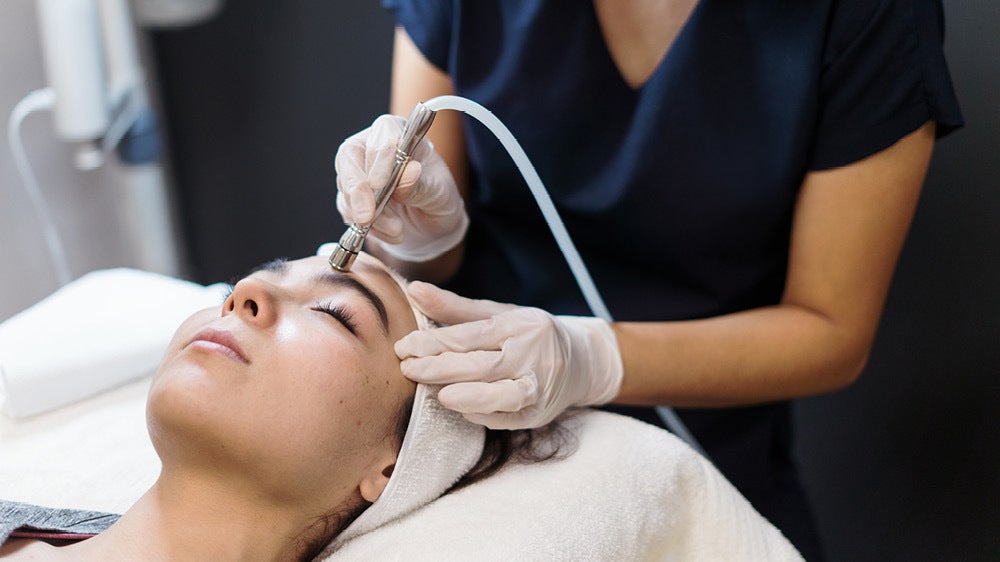What’s the difference between microdermabrasion and dermaplaning?
September 8, 2024Categories: Plastic Surgery and Medical Spa Health
Both microdermabrasion (microderm) and dermaplaning can benefit your skin by removing dead skin cells. Each has a different method of improving your skin’s look.
What is microdermabrasion?
During a microderm treatment, your skin will be rejuvenated by removing dead skin cells contributing to dull, lifeless-looking skin. Resurfacing the skin reduces the effects of aging by softening fine lines, enhancing skin texture and improving minor imperfections.
The treatment helps thicken collagen – protein in the skin that makes it smooth and tight. As we age, our collagen lessens which is why our skin becomes looser and has more wrinkles, texture concerns and unevenness.
During a microderm treatment, your skin will be gently exfoliated with a diamond-tip wand and the dead skin cells will be removed, resulting in a smooth skin layer.
What is dermaplaning?
Dermaplaning is an exfoliation treatment that removes the outermost layer of dead skin cells. It helps improve the texture of the skin and enhances the absorption of skincare products.
When dermaplaning, a scalpel gently shaves dead skin cells and hair (often called peach fuzz).
Which treatment option is best for me?
Based on your skin goals, our specialists can help you determine which treatment is best for you. There are a few factors to consider though.
Do not have a microderm treatment if you’re:
- Pregnant.
- Breastfeeding.
- Have sensitive skin.
- Experiencing an acne breakout.
- Have a rash, sunburn or cold sores.
Dermaplaning isn’t recommended if you’re experiencing:
- An acne breakout.
- Cold sores.
- Rash.
- Sunburn.
To learn more, request a consultation to visit with our specialists.
This blog was medically reviewed by a MercyOne provider.

